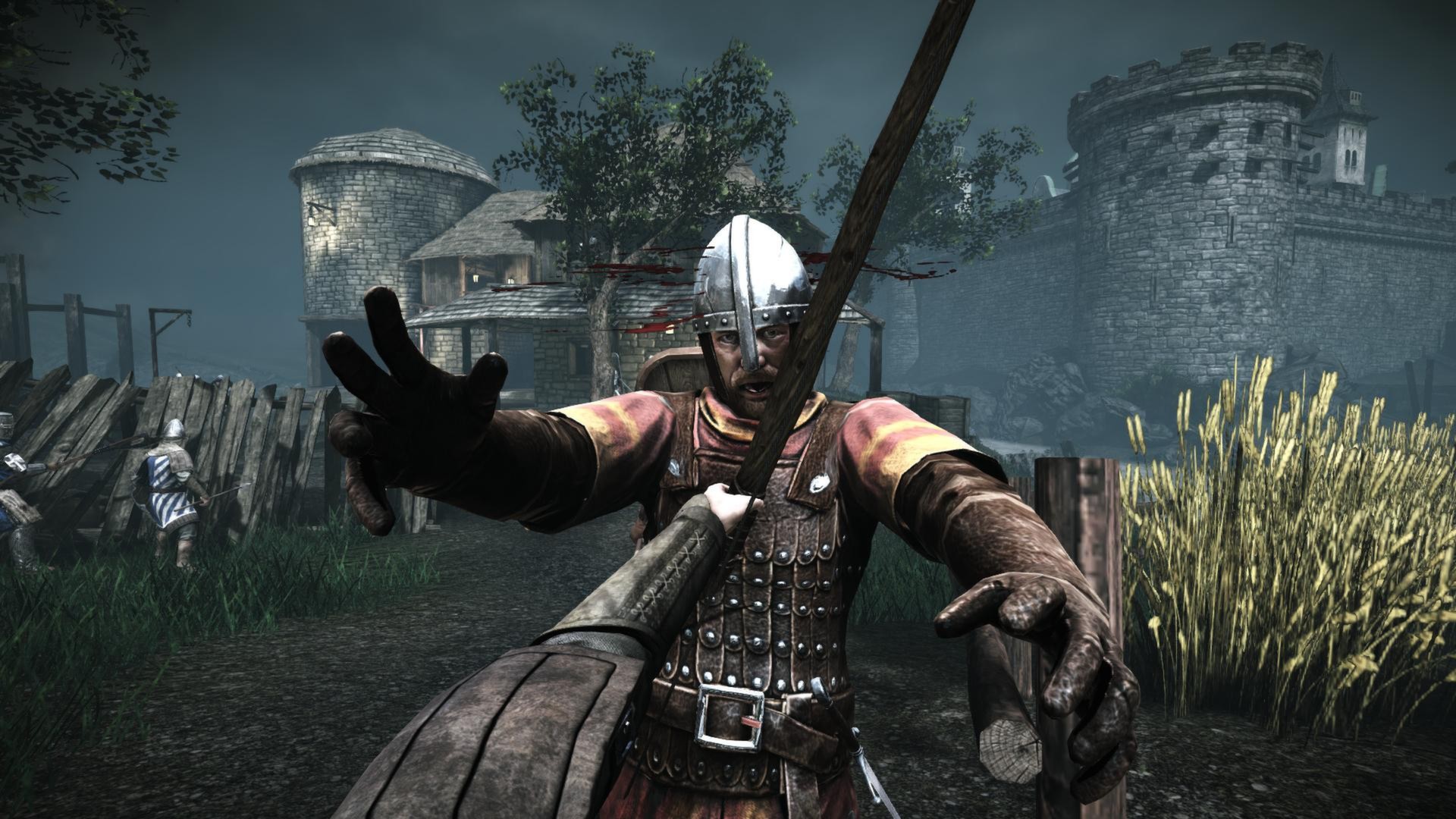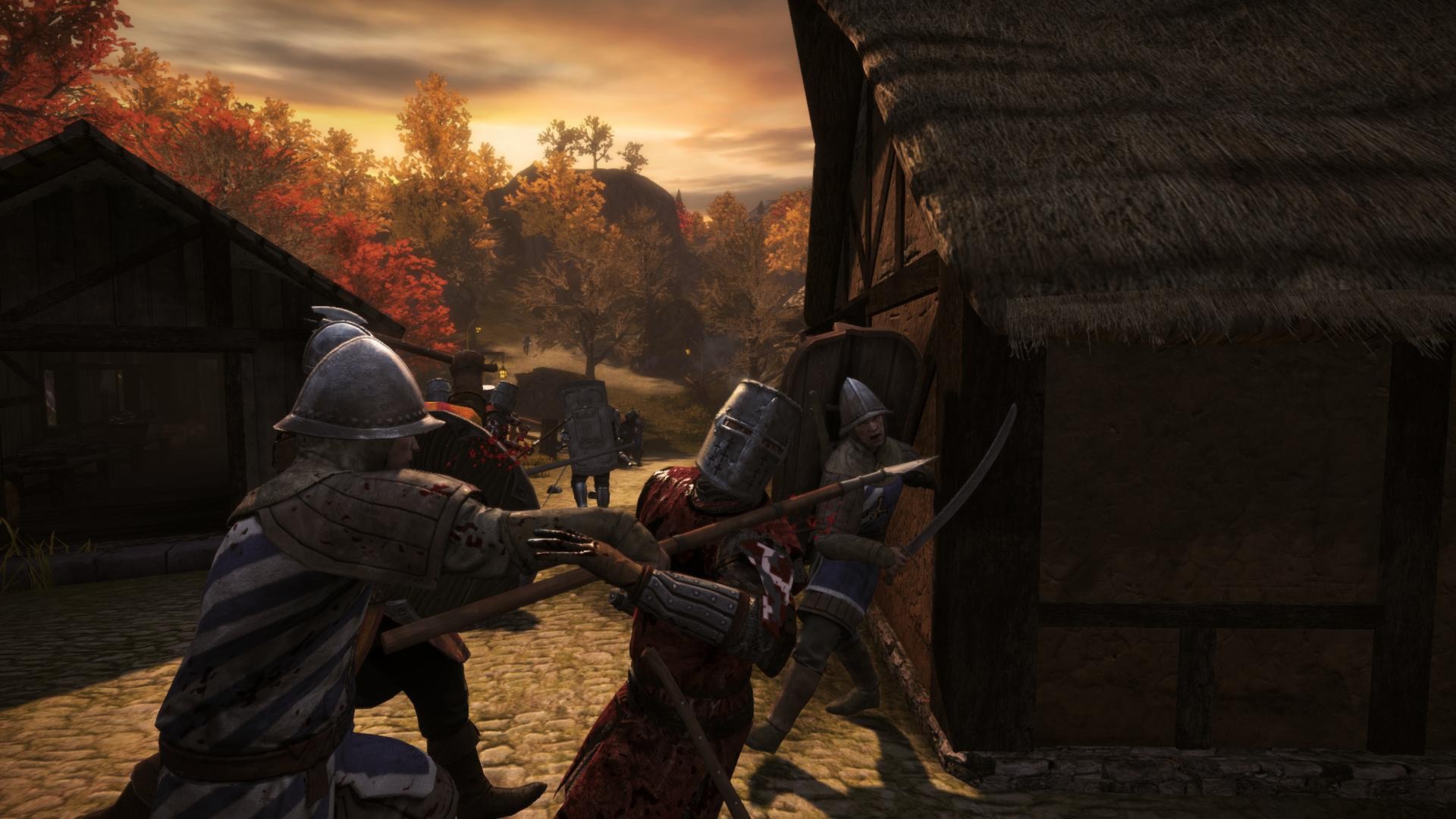Chivalry: Medieval Warfare Review

Old-school battles: we simply chop heads left and right.
I have always liked the fantasy genre. The times of kings, castles, and, of course, knights, filled me with indescribable delight. Now, in the game we will talk about, the word “chivalry” is in the title. However, let’s be honest: there won’t be much knightly behavior in the heat of battle. And you will quickly realize this after launching Chivalry: Medieval Warfare for the first time. But besides that, after spending some time playing the game, you will also discover that it captivates you more and more.
Chivalry is a multiplayer first/third-person game in which two opposing teams face each other in hand-to-hand combat to the death. The game features various modes: Team Deathmatch (free-for-all battles), Team Objective (completing separate missions and achieving specific goals), Free-for-All (every man for himself), Last Team Standing (the team that wins seven battles wins the match), and King of the Hill (the team must hold a specific position for as long as possible). Most of these modes are quite common, but the game stands out from a long list of competitors in other ways.
Since the game revolves entirely around hand-to-hand combat, you will have to kill other knights and participants in battle using only melee weapons, the variety of which will surely please you: from short and skillful swords to huge axes and hammers. All of these weapons can be swung horizontally, from above the head, and with thrusting movements. Since you cannot indefinitely maintain the same blocking technique, you need to time your blocks correctly to stop the enemy’s attack. Much depends on stamina, which decreases when performing an attacking move or blocking. If you notice someone defending themselves with a shield, you can start by giving them a good push to throw them off balance and make them vulnerable to subsequent attacks. Additionally, you can even “feint” your attack to deceive your opponents. When they block in fear, their stamina decreases for a certain period. These are the moments you should take advantage of to leave your opponent headless.
And when I say “leave your opponent headless,” I mean exactly what you thought. When it comes to the contact of your opponent’s body with your weapon, Chivalry becomes an extremely brutal game. For example, a well-placed strike can easily decapitate or sever one of your opponent’s limbs. When your character delivers such strikes, it looks quite amusing. However, when your character loses their own limbs (which will happen more than once, regardless of your desire), you instinctively cringe in horror. Excellent visuals and realistic sound effects are what make this game stand out for me. The scream of an enemy whom you just made a hole in the skull with your axe can literally turn everything inside out. At the same time, the witty remarks that the hero throws during battles add a touch of humor to the overall grim picture.
The combat mechanics can be considered relatively simple, but you shouldn’t relax too early. You begin to feel the depth of the game when it comes to honing your skills to consistently emerge as the victor in bloody duels against enemy knights. Fortunately, Medieval Warfare has an excellent tutorial video that shows you combat techniques, different character classes, and their distinctive features. I must also mention that this video amused me quite a bit in some moments. Both this short tutorial and the game itself never take themselves too seriously: there is always room for humor. And this fact cannot but please, as a breath of fresh air should always be present in the tense atmosphere created by the game.

Different classes of knights make the strategic element of Chivalry: Medieval Warfare even more exciting. Here there are archers who shoot from bows and crossbows, but also know how to use a dagger in hand-to-hand combat. The Man-at-Arms class is characterized by light armor, but its advantage is the highest maneuverability among all other character types. The Vanguard class is better protected and uses weapons with a large radius of attack: spears and halberds. And of course, you have knights at your disposal. These human tanks are slow and cumbersome, but you won’t find more resilient units on the battlefield: knights can stand on their feet indefinitely, hacking each other and anyone who gets in their way with their massive swords and axes. Each class is characterized by its own gameplay style and controls. Therefore, to assemble a truly strong squad, it must include representatives of each game race. You start the game with a standard set of weapons, which expands significantly as you make more kills with a certain type of weapon. Sometimes this is what added excitement for me: I wanted to discover new, more powerful weapons, rather than just achieve game objectives. Unfortunately, it is not possible to upgrade existing or unlock new weapons. But there are advantages to this: it gives all players on the battlefield more or less equal opportunities.
But the game arsenal does not end there, as you can also use catapults and ballistae. And in Team Objective modes (where achieving a certain goal is the main focus), you have siege weapons and fire torches at your disposal, capable of incinerating any village. All of them fit perfectly into the overall gameplay and make battles in Medieval Warfare even more diverse.
Even if you feel that you have mastered the art of combat, you can never relax in this game: no matter how skilled you are, you will have to die quite often. But once you start a successful killing streak, you feel proud of your achieved skill. Besides attacking, you should not forget about defense: although health in the game regenerates over time, sometimes it is not easy to escape unharmed when your health is at its minimum level.

The presence of different game modes will also not let you get bored quickly. Most of them are built around defeating the opposing team, and the only exception is the objective-based mode. A crucial aspect for success in Chivalry is teamwork, which is essential in every game mode. Of course, from time to time, you will come across groups of people who are only interested in chaotic battles. But when you are lucky enough to find players who think strategically, Medieval Warfare will present itself in a completely different light.
Like everywhere else, there are also some flaws here. Sometimes, glitches can overshadow your enjoyment of the game, occurring here and there. When you observe battles in spectator mode or use massive war machines (such as catapults and ballistae) in combat, the graphics may lag a bit. Although all the maps are well-designed and enjoyable to play on, the overall number of maps leaves something to be desired: I often found myself in locations I had already been to multiple times. I was kicked out of the game several times, although it could have been due to other players or server overload. The game supports controllers, but the implementation feels incomplete. I was perfectly satisfied using a mouse and keyboard to control my character in Chivalry. However, players accustomed to the Xbox 360 controller will also not feel deprived during battles.
I really enjoyed playing Chivalry: Medieval Warfare. It was challenging at first, but once I practiced a bit and found a suitable team, things went much better. Even when my character was killed, being dismembered brought me a certain amount of satisfaction. I can confidently say that the game is worth its price of $25. And if you are looking for intense but interesting adventures, it is definitely worth paying attention to.
Share
Discuss
More Reviews





